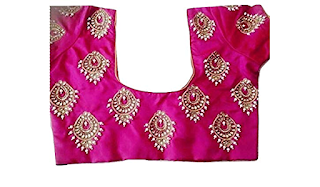The Evolution of Afrofuturist Fashion: A Brief History
Afrofuturism is a cultural movement that combines elements of science fiction, fantasy, and futuristic technology with African and African diaspora culture. It emerged in the 1950s and 1960s as a response to the social and political climate of the time, particularly in the United States and the Caribbean, and has since expanded to influence art, music, film, literature, and fashion.
In terms of fashion, Afrofuturism is characterized by a blending of traditional African styles and materials with modern and futuristic designs. It often features bold, bright colors, geometric patterns, and avant-garde silhouettes. Here are some key moments and trends in Afrofuturism fashion history:
1. The Space Age (1950s-1960s): During the Space Race, many African Americans saw the potential for space exploration as a way to escape racial discrimination on Earth. This led to a fascination with futuristic fashion and space-themed designs, which were incorporated into Afrofuturist aesthetics.
2. The Black Arts Movement (1960s-1970s): The Black Arts Movement was a cultural revolution that aimed to promote black identity and pride through art and literature. This movement influenced Afrofuturism fashion by emphasizing the use of traditional African fabrics and patterns, such as kente cloth, as well as incorporating political messaging into clothing designs.
3. Hip Hop (1980s-1990s): The rise of hip hop culture brought a new wave of Afrofuturism fashion that blended African influences with streetwear. This style often featured oversized clothing, athletic wear, and graphic prints, as well as the use of African jewelry and accessories.
4. Contemporary Afrofuturism (2000s-present): In recent years, Afrofuturism fashion has become more mainstream, with designers incorporating African influences into their collections. This trend has included the use of African textiles and prints, as well as the incorporation of traditional African dress into modern fashion.
Afrofuturism fashion is a constantly evolving movement that draws inspiration from both the past and the future. Its emphasis on blending African and futuristic aesthetics has influenced fashion trends around the world and continues to inspire designers today.
In Afrofuturism fashion, designers often incorporate traditional African textiles and patterns, such as Ankara or Kente cloth, into contemporary designs. They also draw inspiration from science fiction and fantasy, incorporating metallic and space-age elements, exaggerated silhouettes, and futuristic details like neon colors, reflective materials, and LED lights.
Afrofuturism fashion is often used as a form of cultural resistance, challenging the dominant narratives and stereotypes about black identity and culture. It embraces blackness as a source of power and creativity, and imagines a future where black people are represented and celebrated in science fiction and fantasy media.
Some examples of Afrofuturism fashion include the designs of Senegalese fashion designer Selly Raby Kane, who incorporates traditional African textiles and patterns into futuristic and avant-garde designs, and the work of Nigerian fashion designer Titi Belo, who creates designs inspired by African mythology and science fiction.


Comments
Post a Comment